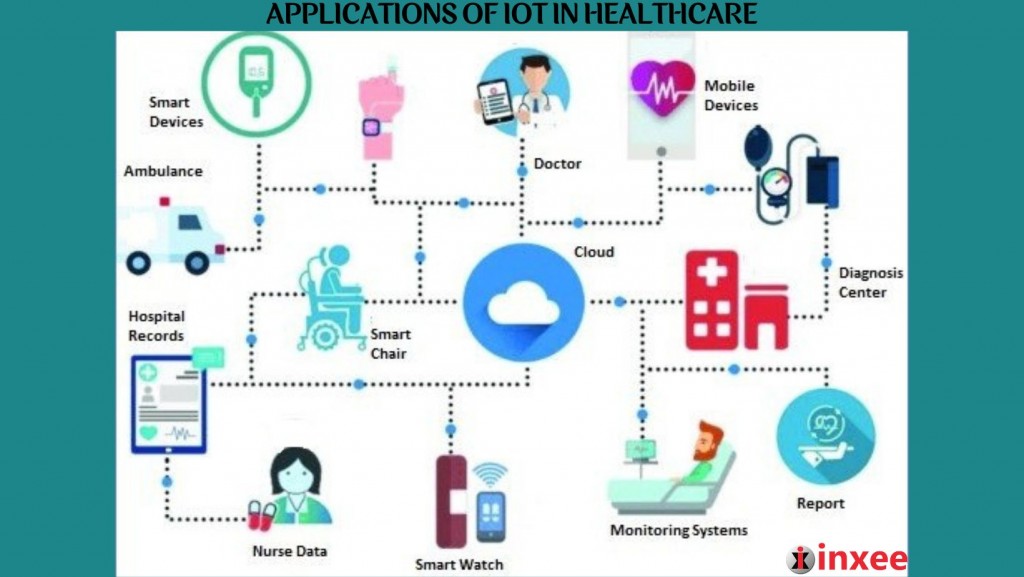Applications of IoT in Healthcare

The IoT is undeniably changing the healthcare business by reconfiguring devices and human interaction in provisioning healthcare solutions. Remote monitoring is the most important feature unleashed by IoT in the healthcare sector. Apart from remote monitoring, IoT has proved its worth in this sector by providing a range of wearable and implantable devices that empower clinicians to assess the disease more accurately. IoT has a wide range of applicability for patients, doctors, and medical insurance companies.
Remote monitoring is one of the key benefits of the integration of IoT in healthcare. It enables the doctors and patients to interact more often, resulting in reduced healthcare costs. Wearable devices like fitness bands, Fitbit’s, and other wireless devices like blood pressure and heartbeat monitoring cuffs are doing excellent jobs enabling patients to access their personalized information. These devices can be programmed to remind patients of blood pressure or sugar variations, health appointments, exercise checks, and many more. For doctors and physicians, IoT has given numerous benefits too. Wearables and monitoring devices help doctors to monitor the health of patients more effectively and proactively. Apart from patients and physicians, IoT is yielding immense benefits to hospitals and insurance companies. IoT-enabled devices can help hospitals monitor medical equipment, medical staff, the rate of infection, and many more. Further, medical insurance companies can leverage the data collected by IoT-enabled health monitoring devices.
The integration of healthcare and IoT has unfolded numerous advantages. Firstly, remote monitoring has drastically cut down unnecessary expenses of doctor visits, hospital stays, and medical tests. Secondly, IoT has induced transparency in disease diagnosis resulting in early disease detection and increased accuracy. In the healthcare industry, managing pharmaceuticals and medical equipment is a significant concern. IoT can be efficiently utilized to administer and manage these at lower costs. With numerous benefits come from the integration of IoT and healthcare services, there exist several challenges too. Following are some challenges:
1. Data security and privacy are major concerns for practitioners and researchers as IoT devices transmit data in real-time.
2. The compatibility of numerous IoT devices with protocols and deployed infrastructure is another hindrance.
3. Another major issue is data overload and inaccuracy. IoT devices collect a large amount of data that provides useful insights that can help improve decision-making capability when analyzed. But as the number of IoT devices increases exponentially, it is getting very difficult to process this huge data and extract useful information.
4. Finally, the cost is the considerable constraint that restricts every common man from using this technology.









Leave a Reply